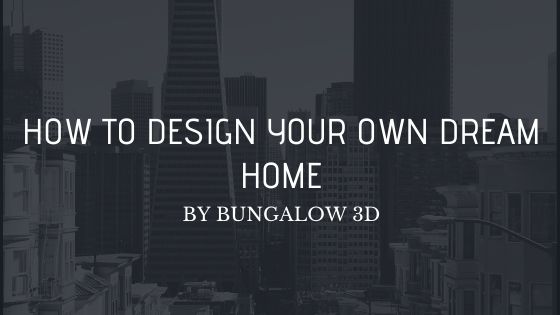How to Design Your Own Dream Home
Every one of us in some time of life thinks of building his or her dream home but how to build a Dream home so here we are providing guidelines for how to select yours to dream home design.
Here are some points:
- Getting Inspired
Come up with a primary vision. Before you draw a single line, picture what kind of home you would want to live in if money were no object. The earliest stages of the design process are not about building materials or zoning regulations, but about how you define your desires.
Mark through architecture publications. Poring over some domestic design photobooks or home design manuals at the bookstore can be a good way to get your wheels turning.
Tour areas with houses that spark your imagination. Go for a drive through a few of the subdivisions in your area and scope out the houses there.
Take pictures of attractive houses to study later. When you see a home that catches your focus, get your camera out and shoot it from as many points as you can.
- Planning and Refining Your Thoughts
Draw up a responsible budget. Instead of starting with the question “how much will it cost to build my dream home just the way I want it,” ask yourself “how much house can I actually afford?” This will help you arrive at a more realistic figure and bring your vision into a clearer focus.
Analyze your individual needs. Now that you're getting serious about documenting what you want, it's time to zero in on what you need. This is where considerations like space, privacy, and specific building techniques will come into play.
Make a list of basic features. Under individualized headings for each of the main rooms, start naming the conveniences you just have to have. Maybe you're crazy about island kitchen counters, or you've always wanted bay windows or a living room with a comfy reading nook.
- Achieving Your Plans
Use a 3D imaging software to clean up your floor plan. Programs like Virtual Architect, Room Sketcher, and Home Designer Suite make it easy for homeowners to bring their pen-and-paper designs to life on the screen.
Find a suitable location. Not every style of home will work equally well in a given setting. Though your main task is to conceptualize the broad strokes of how your living space will look, it's also important to gather knowledge about the area where you'll be situated.
Consult with an architect to discuss your plans. Listen closely as they share their expert input and be receptive to whatever advice they offer. Your part of the design is knowing what you want. It's their job to ensure that your goals for your home are met and to steer you around common design traps and complications.
Go over your plan with a building team. Once you and your architectural consultant have your floor plans looking the way you want them, your work is done. All that's left to do is a handoff your completed plans to the professionals. An experienced home architect will help fix you up with a capable general contractor, and together they'll break ground on your future.
Hope this will help you in designing your dream home.
Contact Bungalow3D:
Call Us On +91-8975182400
Email Us On: info@bungalow3d.com
Contact Bungalow3D:
Call Us On +91-8975182400
Email Us On: info@bungalow3d.com
Follow Us On Instagram:www.instagram.com/bungalow3d/
Follow Us On Linkedin: www.linkedin.com/in/bungalow-3d/
Like Us On Facebook: www.facebook.com/Bungalow-3D-391797064758275/
Visit us On: http://bungalow3d.com
Follow Us On Linkedin: www.linkedin.com/in/bungalow-3d/
Like Us On Facebook: www.facebook.com/Bungalow-3D-391797064758275/
Visit us On: http://bungalow3d.com

Comments
Post a Comment